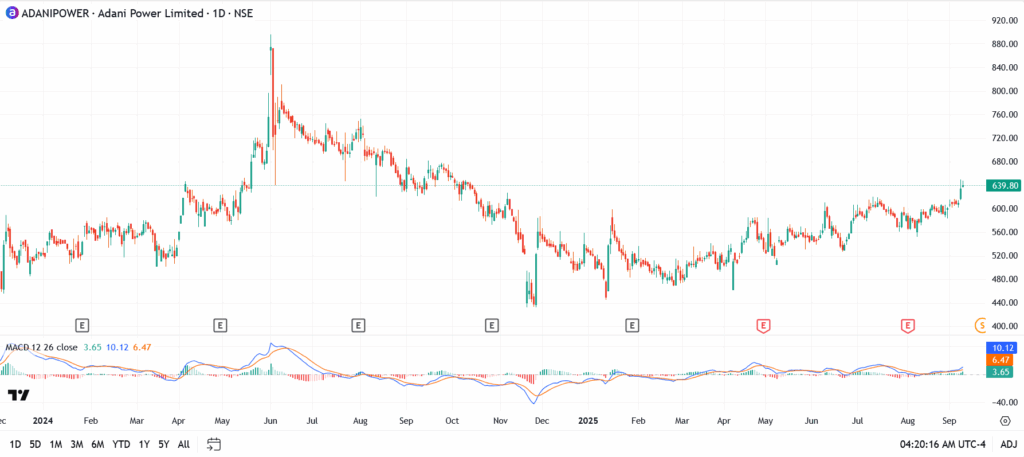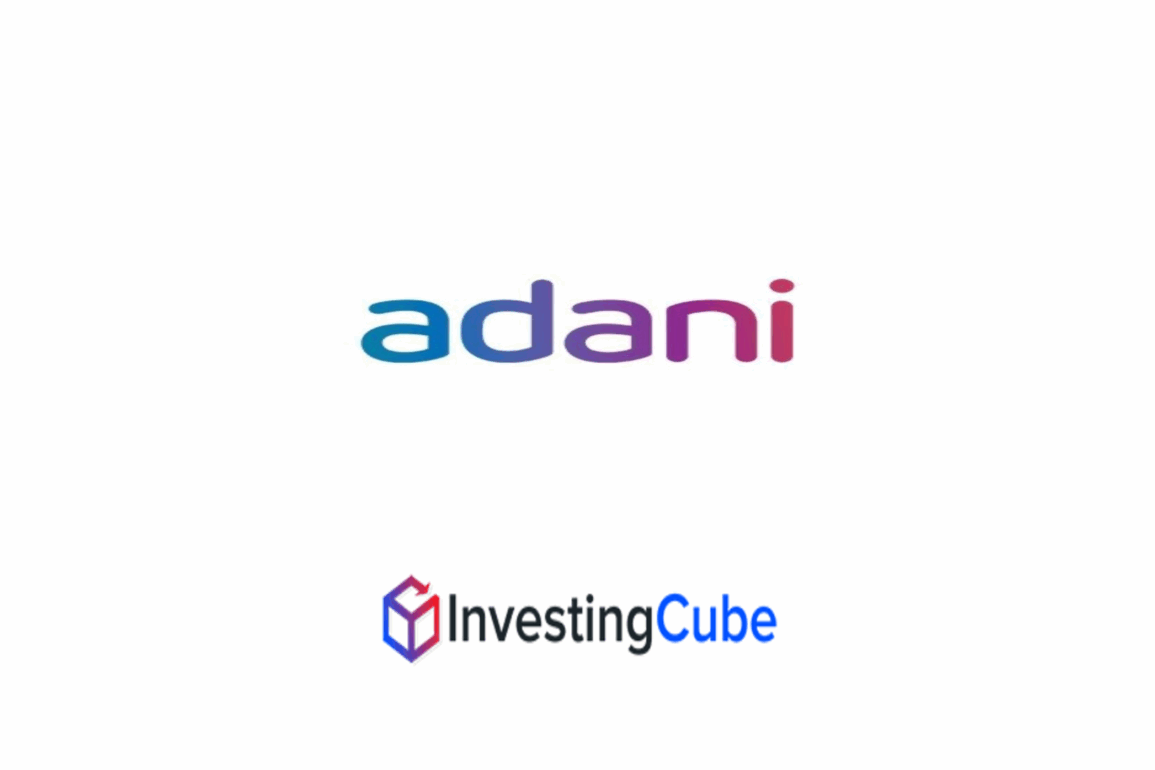- Adani Power stock jumps on Bhutan hydro deal but Q1 profits slip 15%. Can it still hit ₹700–₹800? Here’s what investors should know...
Adani Power (NSE: ADANIPOWER) lit up the markets on Tuesday, climbing as much as 6.5% intraday to ₹649.6 after the company inked a landmark shareholders’ agreement with Bhutan’s Druk Green Power Corporation. By mid-session, shares cooled to around ₹637.8, still 4.6% higher on the day, lifting the company’s market value to nearly ₹2.5 trillion. The move extends a recovery trend that has seen the stock surge nearly 50% from its 52-week low.
Why the Bhutan Hydroelectric Deal Is a Game Changer
The pact clears the way for the 570 MW Wangchhu hydroelectric project, a peaking run-of-river venture to be built under a BOOT (Build, Own, Operate, Transfer) model. Signed in the presence of Bhutan’s Prime Minister Dasho Tshering Tobgay and Gautam Adani, the agreement also included an in-principle nod for a power purchase agreement (PPA).
For Adani Power, the deal is more than symbolism. It diversifies a portfolio long dominated by coal, plants the group firmly in the clean-energy conversation, and strengthens its footprint in South Asia’s power corridors. Analysts note that tying up with Bhutan, a hydropower-rich country, gives Adani a steady path into regional electricity trade.
Adani Power Q1 Earnings: Profit Hit, Volumes Hold
The company’s latest results were a reminder that growth comes with challenges. Q1 FY26 consolidated net profit slid 15.5% to ₹3,305 crore from ₹3,912 crore a year earlier, with revenue down 5.7% to ₹14,109 crore. Higher operating costs after acquisitions also dragged EBITDA to ₹5,744 crore, compared with ₹6,290 crore last year.
Yet volumes told a different story. Sales rose 1.6% to 24.6 billion units, showing that demand remains intact even when margins wobble. For investors, the ability to hold ground on volume is key to long-term stability.
Adani Power Share Price Chart Analysis
- Current Price: ₹639.8
- Resistance Levels: ₹650, then ₹680
- Support Zones: ₹610, followed by ₹585

Entry Point for Traders: A fresh long position makes sense only if the stock closes firmly above ₹650 on strong volume, anything weaker, and it’s better to wait for a dip near ₹610 before stepping in.
Outlook for Adani Power Investors
Adani Power’s latest rally is not just about a one-off headline. The Bhutan hydroelectric deal plugs the company directly into India’s regional energy security push, giving it exposure to cross-border projects that can generate stable cash flows over decades. That diversification matters, especially after Q1’s softer earnings, where higher costs cut margins even as power volumes ticked higher.
For investors, the message is twofold: in the short run, the stock will likely trade on sentiment swings tied to project news and tariff outlooks. But the longer-term story is underpinned by India’s rising baseload demand and Adani’s ability to scale capacity across both thermal and renewables. Add in strategic partnerships like the Bhutan venture, and the company is positioning itself as a regional power heavyweight rather than just a domestic utility.
That said, volatility is part of the package. The chart tells you traders are circling, and until earnings growth catches up with valuation, every breakout attempt will attract profit-takers. The Bhutan agreement gives the narrative a boost, but execution and policy stability will decide how far this rally can really run.
Adani Power FAQs
The rally is less about noise and more about numbers. Capacity expansion, power purchase agreements, and global energy tie-ups have kept investors interested. In short, traders are chasing earnings momentum while critics focus on the headlines.
Adani Power has plenty going for it, a healthy pipeline of projects and India’s energy demand only getting bigger. Whether it makes its way back to ₹700–₹800 will come down to how smoothly it executes, how the regulators play ball, and how tightly it keeps debt under control. The story is still one of growth, but don’t expect a straight-line climb.
It really comes down to how much risk you’re willing to carry. Averaging down piles more money into the same bet, while spreading into Ports, Green Energy, or Transmission gives you a wider safety net. Both can work, but going all-in on one Adani stock is the kind of move only the boldest traders should attempt.


